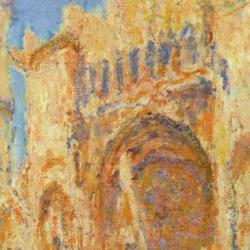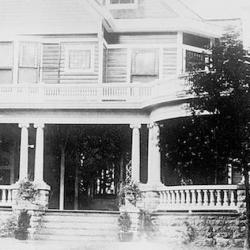A 1982 debate between architects Christopher Alexander and Peter Einsenman focused on contrasting cosmologies expressed by traditional versus modernist architecture. At one point, the exchanged focused specifically on the pitched roof.
Alexander, advocating an architecture of comfort, harmony, and feeling, claimed that “the pitched roof contains a very, very primitive power of feeling. Not a low pitched, tract house roof, but a beautifully shaped, fully pitched roof. That kind of roof has a very primitive essence as a shape, which reaches into a very vulnerable part of you. But the version that is okay among the architectural fraternity is the one which does not have the feeling: the weird angle, the butterfly, the asymmetrically steep shed, etc. — all the shapes which look interesting but which lack feeling altogether. The roof issue is a simple example. But I do believe the history of architecture in the last few decades has been one of specifically and repeatedly trying to avoid any primitive feeling whatsoever. Why this has taken place, I don’t know.”
Einsenman acknowledged that the pitched roof expressed a certain understanding of man’s place in the world: “the pitched roof is – as Gaston Bachelard points out – one of the essential characteristics of ‘houseness.’ It was the extension of the vertebrate structure which sheltered and enclosed man. Michel Foucault has said that when man began to study man in the 19th century, there was a displacement of man from the center. The representation of the fact that man was no longer the center of the world, no longer the arbiter, and, therefore, no longer controlling artifacts, was reflected in a change from the vertebrate-center type of structure to the center-as-void. That distance, which you call alienation or lack of feeling, may have been merely a natural product of this new cosmology. . . . The non-vertebrate structure is an attempt to express that change in the cosmology. It is not merely a stylistic issue, or one that goes against feeling, or the alienation that man feels. When man began to study himself, he began to lose his position in the center. The loss of center is expressed by that alienation.” In short, “what Modernism was attempting to explain by its form was that alienation.”
Having lost a sense of being at home in the world, architects built buildings that were no longer homes, no longer human.
Behind the sense of “houseness” in pitched-roof designs was a larger conception of harmony between man and the cosmos. Alexander explained, “Up until about 1600, most of the world views that existed in different cultures did see man and the universe as more or less intertwined and inseparable … either through the medium of what they called God or in some other way. But all that was understood.” He blames the loss of this conception on the mechanistic cosmology of science, which, despite its massive benefits, has seduced moderns into believing that “things were like little machines because only then could you tinker with them and find out what makes them tick.”
What, he asks, if this is not factually true? What kind of architecture would follow if “the constitution of the universe [were] such that the human self and the substance that things made out of, the spatial matter or whatever you call it, are much more inextricably related than we realized.”
As both architects understood, architecture makes the world into the image of cosmology it envisions. Alienated moderns produce alienating architecture that forms a built environment that reinforces alienation. A cosmology of harmony reinforces that harmony in our experience by building houses that make us sense that we are at home in this world.















